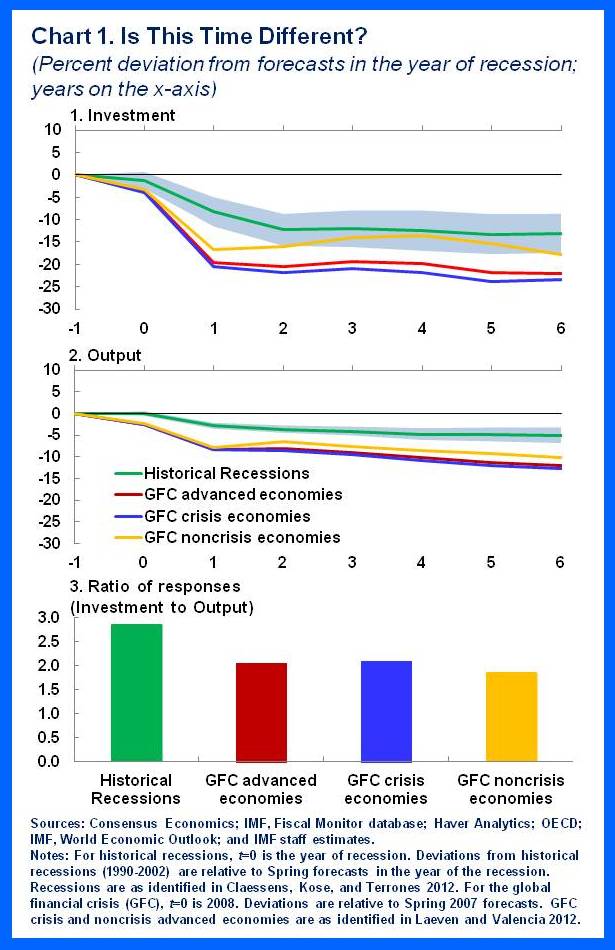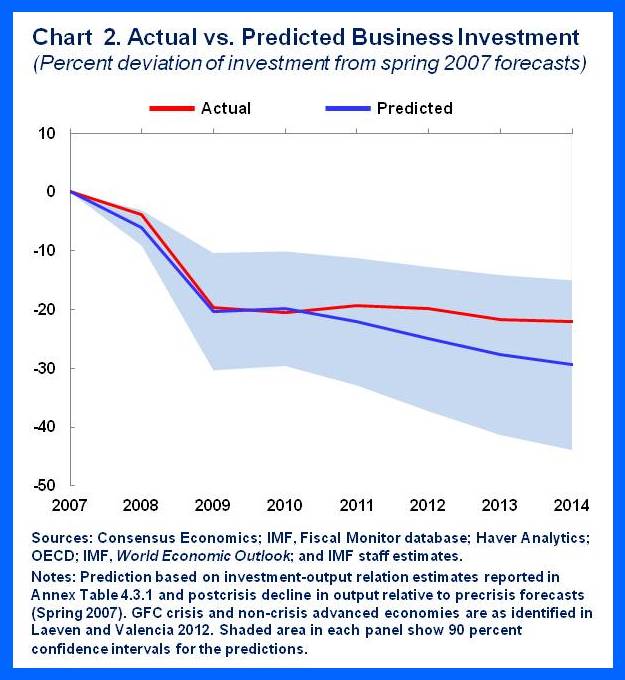(Versions in عربي, 中文, Français, 日本語, Русский, and Español)
The debate continues on why businesses aren’t investing more in machinery, equipment and plants. In advanced economies, business investment—the largest component of private investment—has contracted much more since the global financial crisis than after previous recession. And there are worrying signs that this has eroded long-term economic growth.
Getting the diagnosis right is critical for devising policies to encourage firms to invest more. If low investment is merely a symptom of a weak economic environment, with firms responding to weak sales, then calls for expanding overall economic activity could be justified. If, on the other hand, special impediments are mainly to blame, such as policy uncertainty or financial sector weaknesses, as some suggest, then these must be removed before investment can rise.
Weak economic activity key factor
 Our research, in Chapter 4 of the April 2015 World Economic Outlook, suggests that weak economic activity is the overriding factor holding back business investment. Although it contracted more severely following the crisis than in previous recessions, the contraction in output was also much more severe. The joint behavior of business investment and output has therefore not been unusual (see chart 1).
Our research, in Chapter 4 of the April 2015 World Economic Outlook, suggests that weak economic activity is the overriding factor holding back business investment. Although it contracted more severely following the crisis than in previous recessions, the contraction in output was also much more severe. The joint behavior of business investment and output has therefore not been unusual (see chart 1).
Using a novel statistical approach that deals with reverse causality running from investment to output, we confirm that business investment has deviated little from what could be expected given the weakness in economic activity (see chart 2). In other words, firms have reacted to weak sales—both current and prospective—by reducing capital spending. Indeed, when businesses are asked about the main challenges facing them, they typically report lack of customer demand as the dominant factor.
Beyond this general pattern, we find pockets of puzzling investment weakness, particularly in euro area countries whose borrowing costs spiked during the 2010-11 sovereign debt crisis. In these countries, financial constraints and policy uncertainty have played an additional role, beyond weak output, in holding back business investment.
We conclude that a comprehensive policy effort to expand output is needed to sustainably raise private investment. Fiscal and monetary policies can encourage firms to invest, although such policies are unlikely to return investment fully to precrisis trends. More public infrastructure investment could also spur demand in the short term, raise supply in the medium term, and thus “crowd in” private investment in countries where conditions are right. And structural reforms, such as those to strengthen labor force participation, could improve the outlook for potential output and thus encourage private investment.





